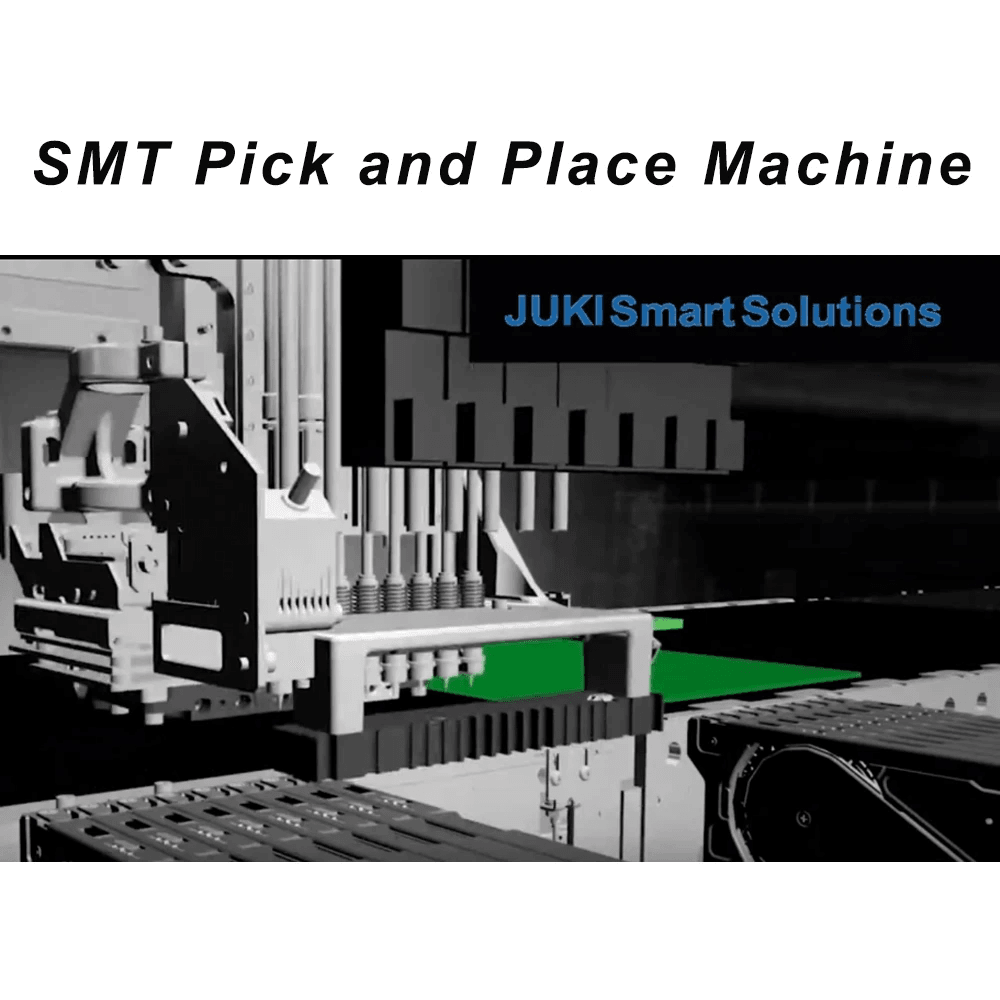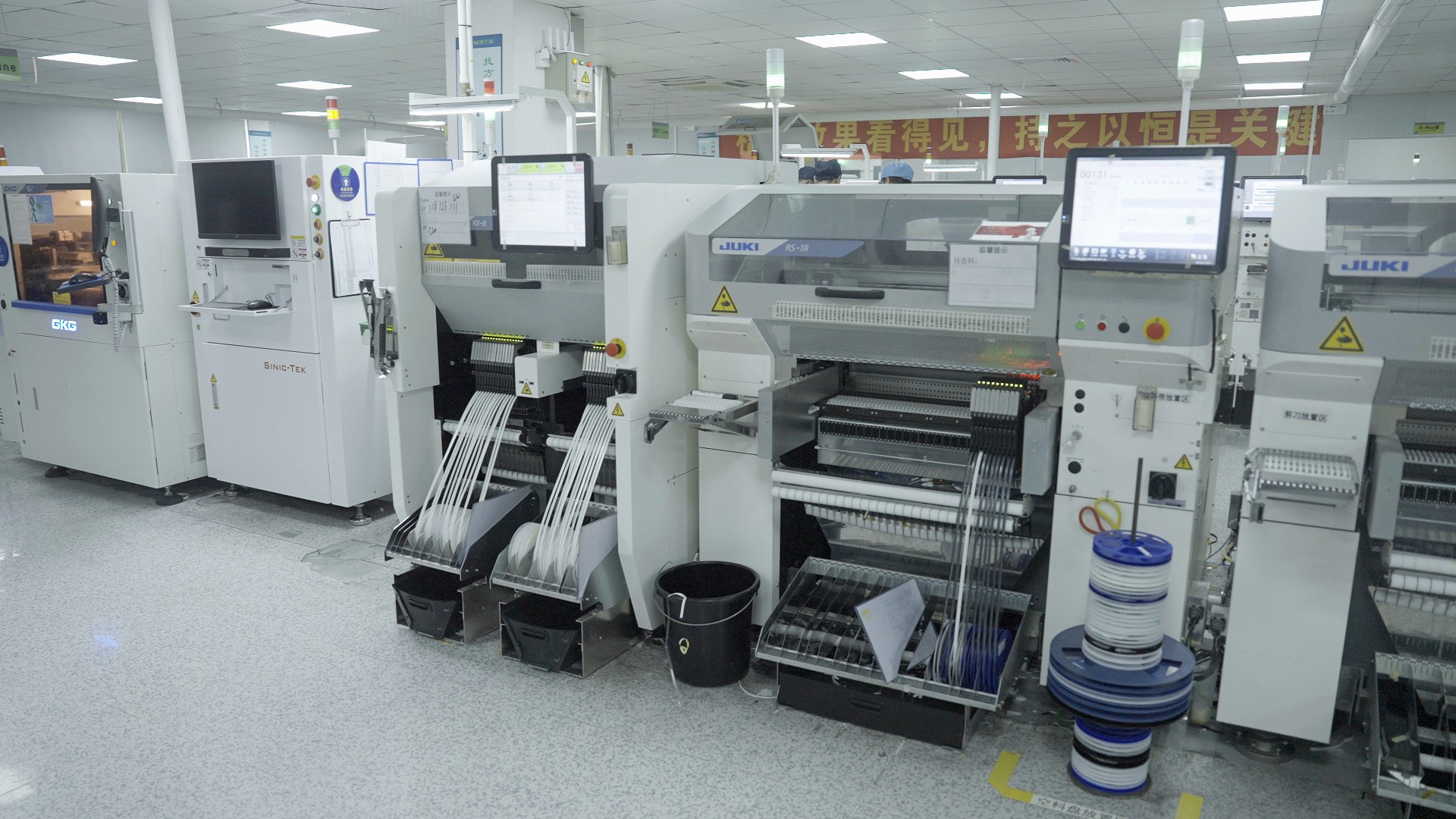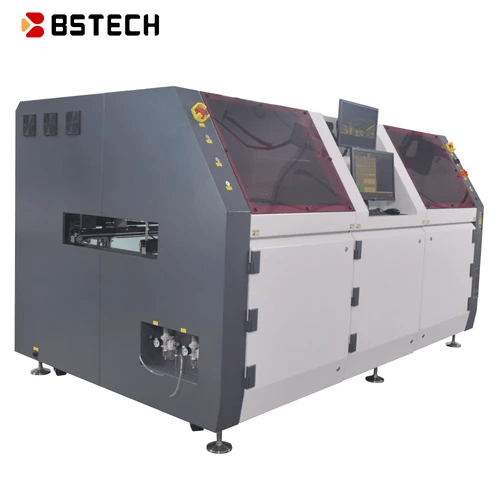Introduction

In the world of electronics, surface mount technology (SMT) has revolutionized how components are attached to circuit boards. This method offers a compact design and efficient assembly processes, making it essential for modern manufacturing. Understanding SMT and its importance is crucial for anyone involved in electronics production or assembly.
Understanding SMT and Its Importance
Surface mount technology (SMT) enables components to be mounted directly onto the surface of a circuit board, eliminating the need for drilled holes as seen in traditional soldering methods like soldering iron soldering. This innovation not only saves space on circuit boards but also enhances electrical performance by reducing the length of connections. As devices become smaller and more complex, SMT's significance continues to grow in various industries.
The Role of Automatic Soldering Machines
Automatic soldering machines play a pivotal role in streamlining the SMT process, allowing manufacturers to achieve high precision and consistency in their production lines. These machines utilize various techniques, including reflow soldering and laser soldering systems, to ensure that each component is securely attached with minimal human intervention. By automating these tasks, companies can maintain quality while increasing output efficiency.
Key Benefits of SMT Technology
The key benefits of SMT technology are numerous and impactful for manufacturers looking to optimize their production capabilities. Firstly, it allows for higher component density on circuit boards, which can lead to reduced size and weight of electronic devices. Secondly, using solder flux effectively during the SMT process ensures strong electrical connections while minimizing defects—an essential aspect when selecting a suitable soldering kit or surface mount solder equipment for any project.
What is Surface Mount Technology?

Surface Mount Technology (SMT) revolutionized the electronics manufacturing landscape, allowing for more compact and efficient circuit designs. This method involves mounting electronic components directly onto the surface of a circuit board, eliminating the need for through-holes. The result? A significant reduction in size and weight, which is crucial in our increasingly portable tech-driven world.
Definition and History
Surface Mount Technology emerged in the 1960s but gained traction in the 1980s as manufacturers sought faster production methods. Unlike traditional soldering techniques that required components to be inserted into holes on a circuit board, SMT allows for direct attachment to the surface using specialized soldering techniques. This shift not only streamlined assembly processes but also paved the way for advancements such as automatic soldering machines, which further enhanced efficiency.
Comparison with Through-Hole Technology
When comparing SMT with through-hole technology, several key differences emerge that highlight SMT's advantages. Through-hole technology involves inserting leads of components into pre-drilled holes on a circuit board, making it bulkier and less suitable for modern miniaturization demands. In contrast, surface mount soldering reduces space requirements significantly; components can be placed on both sides of a circuit board without compromising performance or integrity.
Importance in Modern Manufacturing
In today’s fast-paced manufacturing environment, Surface Mount Technology plays an essential role by enabling higher component density and faster production speeds. With the advent of sophisticated surface mount soldering machines and improved solder flux formulations, manufacturers can achieve greater reliability and performance in their products. As consumer electronics continue to evolve towards smaller devices with complex functionalities, SMT remains at the forefront of innovation in modern manufacturing practices.
Types of Surface Mount Soldering Machines

When it comes to surface mount soldering machines, there’s a variety of techniques available, each tailored for specific needs in the assembly process. Understanding these options is crucial for optimizing circuit board production and ensuring high-quality results. From traditional soldering iron methods to advanced systems like reflow and laser soldering, each has its unique advantages and applications in SMT assembly.
Overview of Soldering Iron Techniques
Soldering iron techniques are often the go-to choice for smaller-scale projects or quick repairs on circuit boards. These methods involve using a soldering iron to apply heat directly to the components, melting solder flux and joining parts with precision. While this approach allows for greater control over the solder joint, it can be labor-intensive and may not be suitable for high-volume production environments where speed is essential.
For hobbyists or small businesses looking to assemble circuit boards efficiently, a quality solder kit that includes various types of solder can make all the difference. The flexibility of using different tips on a soldering iron allows users to tackle intricate designs effectively. However, as production demands increase, transitioning from manual techniques to automated solutions becomes vital for maintaining consistency and efficiency in surface mount soldering.
Features of Reflow Soldering Machines
Reflow soldering machines have revolutionized SMT assembly by automating the process of applying heat uniformly across a circuit board. These machines utilize controlled heating profiles that allow solder paste—often mixed with flux—to melt and create reliable electrical connections without direct contact from an operator’s hand. The ability to handle multiple boards simultaneously makes reflow systems ideal for large-scale manufacturing where time-to-market is critical.
One standout feature of reflow machines is their programmable settings that can adapt to different types of circuit board layouts and component sizes. This versatility helps manufacturers achieve optimal results regardless of project complexity while minimizing defects associated with manual handling during the assembly process. Additionally, modern reflow systems often include advanced monitoring capabilities that ensure consistent temperatures throughout the entire process.
Advantages of Laser Soldering Systems
Laser soldering systems represent one of the most innovative advancements in surface mount technology today, offering unmatched precision in SMT applications. By using focused laser beams to melt specific areas on a circuit board, these machines provide accurate control over heat application without affecting surrounding components—a game-changer in delicate assemblies requiring meticulous attention to detail.
The benefits extend beyond just precision; laser systems also minimize thermal stress on sensitive electronic parts compared to traditional methods like reflow or direct iron application. This means less risk of damage during assembly while ensuring strong joints through effective use of appropriate solder fluxes tailored specifically for laser applications. Furthermore, as industries continue pushing towards automation, integrating laser technology into production lines offers significant improvements in speed and efficiency.
Key Components of SMT Soldering

In the world of Surface Mount Technology (SMT), understanding the key components of SMT soldering is crucial for achieving high-quality results. From solder flux to the right soldering kit and ensuring circuit board compatibility, each element plays a significant role in the overall success of your surface mount soldering processes. Familiarity with these components not only enhances efficiency but also minimizes errors during assembly.
The Role of Solder Flux
Solder flux is an essential component in surface mount soldering, acting as a lubricant that facilitates the flow of solder during the heating process. It helps to remove oxidation from metal surfaces, ensuring a clean bond between components and circuit boards. Without adequate solder flux, you risk cold joints or weak connections, which can lead to device failure down the line.
When selecting a solder flux for your surface mount soldering machine, consider factors such as compatibility with your specific circuit board materials and the type of SMT solder you are using. Different fluxes come with varying properties—some are designed for lead-free applications while others may be more suited for traditional lead-based solders. Understanding these nuances can make all the difference in achieving optimal results.
Choosing the Right Soldering Kit
Choosing the right soldering kit is pivotal when embarking on your SMT journey. A well-equipped kit typically includes various tools like a quality soldering iron, tweezers for handling tiny components, and different types of SMT solders tailored to your needs. Additionally, ensure that your kit contains appropriate cleaning supplies to maintain both your tools and circuit boards.
Investing in a reliable surface mount soldering machine will also enhance your overall experience; these machines often come equipped with advanced features like temperature control and programmable settings that allow for precise work on intricate designs. Remember that not all kits are created equal; some may lack essential tools or quality materials necessary for efficient assembly processes. Therefore, thorough research before purchasing can save you time—and potential headaches—later on.
Circuit Board Compatibility
Circuit board compatibility is another critical factor when working with surface mount technology; not all boards are designed to accommodate every type of component or assembly technique out there! Understanding how different circuit board designs interact with various types of SMT solders will ensure that you achieve both functionality and durability in your final product.
Before starting any project involving a new circuit board design, it’s wise to consult datasheets or guidelines provided by manufacturers regarding recommended practices for assembly using specific surface mount soldering techniques. This proactive approach can help avoid common pitfalls associated with mismatched components or improper handling methods during assembly processes—resulting in higher-quality outcomes overall.
Bensun Technology: Custom Solutions for SMT

When it comes to Surface Mount Technology (SMT), Bensun Technology stands out as a leader in providing tailored solutions that cater to the unique needs of various industries. Their extensive range of surface mount soldering machines ensures that manufacturers can find the perfect fit for their production requirements. With a commitment to innovation and quality, Bensun is reshaping the landscape of SMT assembly.
Range of SMT Production Equipment
Bensun offers an impressive array of SMT production equipment designed to optimize every stage of the assembly process. From advanced surface mount soldering machines to high-performance soldering kits, each product is engineered with precision and efficiency in mind. Their equipment not only enhances productivity but also ensures compatibility with various circuit board designs, making them a go-to choice for manufacturers seeking reliability.
In addition, Bensun’s selection includes specialized tools for both solder flux application and soldering iron soldering techniques, offering flexibility in how components are attached to circuit boards. Whether you need a robust machine for high-volume production or a compact solution for smaller runs, Bensun has you covered with their diverse offerings. This versatility allows businesses to scale operations without compromising on quality or performance.
Full Production Line Sales and Leasing Options
Understanding that different companies have different needs, Bensun provides both sales and leasing options for their full production line setups. This flexibility allows businesses to choose what works best for their budget and operational strategy while still accessing top-tier surface mount technology solutions. By opting for leasing, companies can minimize upfront costs while benefiting from state-of-the-art equipment.
The full production lines include everything from surface mount soldering machines to testing equipment, ensuring that all aspects of manufacturing are seamlessly integrated. This comprehensive approach not only simplifies the procurement process but also enhances overall efficiency in SMT assembly operations. Companies can rest assured knowing they have access to high-quality machinery without the long-term financial commitment typically associated with purchasing outright.
High-Quality PCBA Contract Manufacturing
Bensun Technology excels in providing high-quality printed circuit board assembly (PCBA) contract manufacturing services tailored specifically for clients' needs. Their expertise in surface mount soldering ensures that every circuit board produced meets stringent quality standards while adhering to industry regulations. With an emphasis on precision and reliability, clients can trust that their products will perform optimally once they hit the market.
Incorporating advanced techniques such as selective soldering alongside traditional methods like solder iron soldering allows Bensun to accommodate a wide range of project requirements effectively. Moreover, their focus on using superior materials—including premium-grade solder flux—guarantees durability and performance across various applications. Clients benefit from reduced lead times and enhanced product integrity through Bensun's meticulous manufacturing processes.
With these custom solutions in place, businesses can confidently navigate the complexities of modern electronics manufacturing while maximizing efficiency through innovative SMT practices.
Best Practices in SMT Assembly

When it comes to surface mount technology (SMT) assembly, employing effective solder techniques is paramount for achieving high-quality results. The use of a surface mount soldering machine can significantly enhance the precision and speed of the soldering process. Additionally, understanding the role of solder flux is crucial; it helps in improving the flow of solder and ensures a strong bond between components and the circuit board.
Effective Use of SMT Solder Techniques
To maximize efficiency during SMT assembly, operators should become proficient with various soldering techniques tailored for surface mount components. Utilizing a high-quality soldering kit that includes appropriate tools—like precision soldering irons—can make a noticeable difference in performance. Moreover, consistently applying the right amount of solder flux can prevent common issues such as bridging or insufficient wetting on your circuit board.
Another effective technique involves pre-tinning leads before placement, which allows for better adhesion when using a surface mount soldering machine. Operators should also consider temperature profiles during reflow processes to ensure optimal melting and solidification of SMT solders. By mastering these techniques, you can significantly reduce defects and improve overall product reliability.
Common Mistakes to Avoid
Despite their advantages, many newcomers to SMT assembly fall prey to avoidable mistakes that can compromise their projects. One common error is applying too much or too little solder; both scenarios can lead to poor connections on the circuit board or even component failure later on. Another pitfall is neglecting proper cleaning procedures for your surface mount soldering machine, which can result in contamination affecting performance.
Additionally, failing to verify component orientation before placement often leads to costly rework down the line; double-check those pins! It's also essential not to overlook thermal management—excessive heat from improper settings on your soldering iron or reflow oven can damage sensitive components beyond repair. Staying vigilant against these mistakes will save time and resources while ensuring high-quality outcomes.
Maintenance Tips for Long-lasting Equipment
Maintaining your equipment is critical for sustaining efficiency and longevity in SMT assembly operations. Regular inspections of your surface mount soldering machine are vital; look out for wear on tips and other components that may affect performance over time. Cleanliness should also be prioritized—ensure that all parts are free from residue build-up caused by flux or excess solder from previous jobs.
Investing in high-quality replacement parts for your circuit board production line will pay off in durability and reliability as well; don’t skimp here! Additionally, setting up a routine maintenance schedule will help keep everything running smoothly without unexpected downtimes due to equipment failure. By adhering to these maintenance tips, you’ll extend the life of your machines while maintaining top-notch production quality.
Conclusion
In the rapidly evolving world of electronics manufacturing, understanding the nuances of surface mount soldering is crucial for staying competitive. As technology progresses, automated soldering solutions are becoming increasingly sophisticated, making it essential for businesses to adapt and embrace these advancements. The future of automated soldering promises not only enhanced efficiency but also improved precision in assembling circuit boards.
The Future of Automated Soldering
The future of automated soldering is bright, with innovations such as AI-driven machines and advanced robotics on the horizon. These developments will significantly reduce human error and increase production speeds, allowing manufacturers to meet growing demand without sacrificing quality. As surface mount soldering machines continue to evolve, they will undoubtedly play a pivotal role in shaping the next generation of electronic devices.
Maximizing Efficiency with SMT
Maximizing efficiency with SMT requires a keen understanding of the various components involved, including solder flux and appropriate soldering kits. By optimizing these elements, manufacturers can streamline their processes and minimize waste during production runs. Additionally, investing in high-quality surface mount soldering equipment can lead to quicker turnaround times and reduced costs over time—ultimately enhancing overall productivity.
Choosing the Right Equipment for Success
Selecting the right equipment is vital for success in SMT assembly; this includes choosing between various types of surface mount soldering machines that cater to specific needs. A well-rounded approach involves considering factors such as compatibility with circuit board designs and the effectiveness of different solder iron techniques available in your arsenal. Ultimately, making informed choices about your tools will ensure that your production line remains efficient and capable of meeting ever-increasing demands.
